 March
20
March
20
Tags
Patrick Heron, Art Critic: Exploring the Limits of Abstraction
 On the 20th of March 1999, iconic English artist, textile designer and critic Patrick Heron died in Zennor, Cornwall, aged 79. Heron is best remembered for his semi-abstract paintings featuring vibrant colourful compositions inspired by nature. Less known perhaps is his career as an art critic to the New Statesman and Nation in 1947–50, and London correspondent to Arts (New York) in 1955–8. Although the artist turned to abstract art under the influence of American abstract painting in 1956, in his criticism he wrote extensively about the distinction between two approaches to abstraction, which, even though stylistically similar, diverged from the point of view of the subject. As early as 1949, Heron had made a distinction between the ‘pure’ Mondrianesque abstraction of the 1930s and a highly individual abstract-figurative vision, which, nevertheless, relied on the perception of the outside world:
On the 20th of March 1999, iconic English artist, textile designer and critic Patrick Heron died in Zennor, Cornwall, aged 79. Heron is best remembered for his semi-abstract paintings featuring vibrant colourful compositions inspired by nature. Less known perhaps is his career as an art critic to the New Statesman and Nation in 1947–50, and London correspondent to Arts (New York) in 1955–8. Although the artist turned to abstract art under the influence of American abstract painting in 1956, in his criticism he wrote extensively about the distinction between two approaches to abstraction, which, even though stylistically similar, diverged from the point of view of the subject. As early as 1949, Heron had made a distinction between the ‘pure’ Mondrianesque abstraction of the 1930s and a highly individual abstract-figurative vision, which, nevertheless, relied on the perception of the outside world:
“Most purely abstract artists believe that the plastic work of art should be entirely self-contained, that it should have no direct reference to any known object outside itself. To my mind this is a pictorial heresy. I do not believe that, in order to give full play to the purely abstract features of form, colour and design, it is necessary to discard all evocation of external reality and to eschew all poetic comment upon a world of perfectly recognizable everyday objects and people. On the contrary, I believe the function of painting at its highest level is the perpetual creation of a new fusion, a new marriage between the purely abstract entities on one side and the everyday world of commonplace, but nevertheless magical realities, on the other. A purely abstract shape is easy to invent. What is difficult, so difficult that only genius can fully accomplish it, is the forging of a new formal image out of familiar, well-known forms.” (Patrick Heron, ‘The Necessity of Distortion in Painting’, from a lecture delivered at Leeds University in October 1949, in Painter as Critic).
Heron supported a type of abstraction which was greatly involved with perfecting the formal capacities of colour and spatial composition, yet he always insisted on the necessity of art to stay true to the subject. By promoting the great French avant-gardists Braque, Bonnard, Matisse, Picasso and attempting to understand the creative process of British artists such as Ivon Hitchens, Roger Hilton or Peter Lanyon, Heron sought to reconcile the extremes of, what he referred to as, ‘pure abstraction’ and the ‘fallacy of realism’. In 1950 he wrote that “if the middle way between pure abstraction and abject representation can once more be strengthened in both England and France, there is hope for modern painting; we should then escape the new academicism, now threatening, the academicism of mechanical abstraction.” (Patrick Heron, “English and French,” New Statesman 39, no. 983 (7 January 1950): 9-10. See also Heron, “Bonnard and Visual Reality,” New Statesman (24 November 1951): 588-9, as well as Heron’s introduction to The Changing Forms of Art (London: Routledge and Kegan Paul, 1955). Heron clearly expressed his resistance to the self-reflexivity of pure abstract art, but also the mimicry of pure realism; in fact he saw a parallel between the two in the sense that both could potentially become academic and doctrinaire.
 In his essay ‘Bonnard and Visual Reality’ (1951), Heron stressed the importance of the visual attitude in painting and the “complex texture of visual reality, the reality of the eye.” He noted the loss of the mimetic function of painting and the important role played by interpretation or “translation” of reality through “distortion” on canvas, instead of literal reproduction of a contemplated subject. This early essay was still very much relying on the idea of Cézannesque synthesis and ‘abstracting from’ nature, which the critic referred to as ‘distortion’ of the subject.
In his essay ‘Bonnard and Visual Reality’ (1951), Heron stressed the importance of the visual attitude in painting and the “complex texture of visual reality, the reality of the eye.” He noted the loss of the mimetic function of painting and the important role played by interpretation or “translation” of reality through “distortion” on canvas, instead of literal reproduction of a contemplated subject. This early essay was still very much relying on the idea of Cézannesque synthesis and ‘abstracting from’ nature, which the critic referred to as ‘distortion’ of the subject.
A few years later though, in 1953, reflecting upon the contemporary significance of the word ‘abstract’, Heron claimed that “the battle for this word’s true meaning has been lost: it is no longer considered a verb, and one applicable to Cézanne’s processes, but as an adjective meaning ‘non-figurative’ ”. This shift in the word’s significance was to prefigure future debates about the delicate boundaries between figuration and abstraction in postwar art. Heron wrote that the word ‘abstract’ came to describe painting which the viewer was only “on the verge of understanding more fully”, whilst images which had become accessible or familiar were generally labelled with an alternative to ‘abstract’. He pointed to the restrictive nature of the word’s new significance when he wrote that, “Being aware of the true content and feeling of a work – even a patently non-figurative one – makes one reluctant to label it with a word which implies, although it ought not to, a certain barren emptiness.” (Patrick Heron, in exh. cat. Space in Colour, an exhibition selected by Heron at the Hanover Gallery, London, July-August 1953, in Painter as Critic). By this, the critic implied the inadequacy of the word ‘abstract’ in the contemporary context, when applied to the non-figurative painting of his fellow artists and voiced the difficulties in labelling this form of art.
Although Heron’s initial critical studies were steeped in the synthesis of nature by the pioneers of the European avant-garde, through his own work and writing he realised the increasingly dual function of contemporary French and British art to stay true both to material and subject. Of the avant-garde movements, Heron initially preferred Cubism for preserving the ties with the outside world, allowing artists to order their vision of reality into a coherent formal structure on canvas whilst exploring the materiality of the medium itself. In this, Cubism provided a bridge between the old and new Écoles de Paris and a way to create a natural relationship between contemporary British painting and Paris. In 1955 he wrote that, “Cubism, in its love of the concrete, extols paint, canvas, paper, chalk as well as wine-glasses, tables and guitars. This sensuous love of the material is of paramount importance to Soulages, de Staël and – over in England – to William Scott, Alan Davie, Roger Hilton, Peter Lanyon, Victor Pasmore and Terry Frost.” (Patrick Heron, “Space in Contemporary Painting and Architecture,” in Changing Forms of Art).
In an article of the same year, Heron used the term ‘abstract-figuration’ (Patrick Heron, “Art is Autonomous,” The Twentieth Century (1955) in Painter as Critic) in an attempt to define this type of abstraction which would still be indispensably relying on the outside world. In this, he attempted to reclaim the tie with reality which was lost in Abstract Expressionism, an interest shared by many of his compatriots, mainly those painters belonging to the St Ives group, as well as an alternative younger generation of American artists working in the 1950s. Heron’s interest in the subject drawn from the visual world, captured in pictorial form through spatial arrangement and composition thus merged with his fascination with “the sensuous love of material” – the plastic potential of the medium.

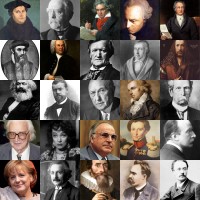


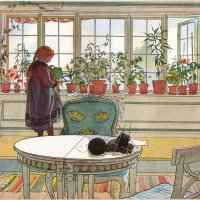
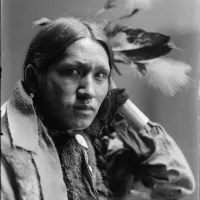
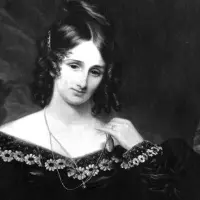
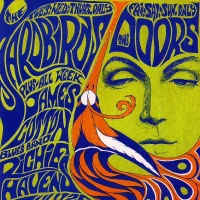
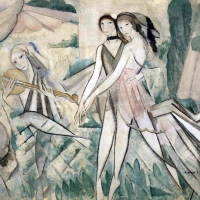
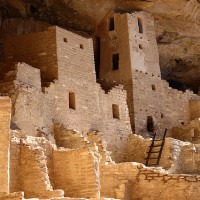
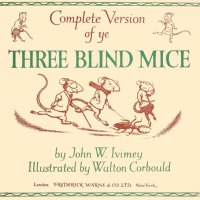
Pingback: spoondrift
Great article….and thanks for introducing me for Patrick Heron. His words give sense to my brand of work….-Lito
LikeLike
Pingback: Path to Abstraction – Lito San Juan
All art is abstract, the result of abstraction from reality – it is a matter of degree. Lenin (he should be taught in all art theory and philosophy classes in the West) wrote ‘From living perception to abstract thought, and from this to practice, such is the dialectical path of the cognition of truth, of the cognition of objective reality.’
LikeLiked by 1 person
Reblogged this on Greek Canadian Literature.
LikeLike
lol ur mom
LikeLike